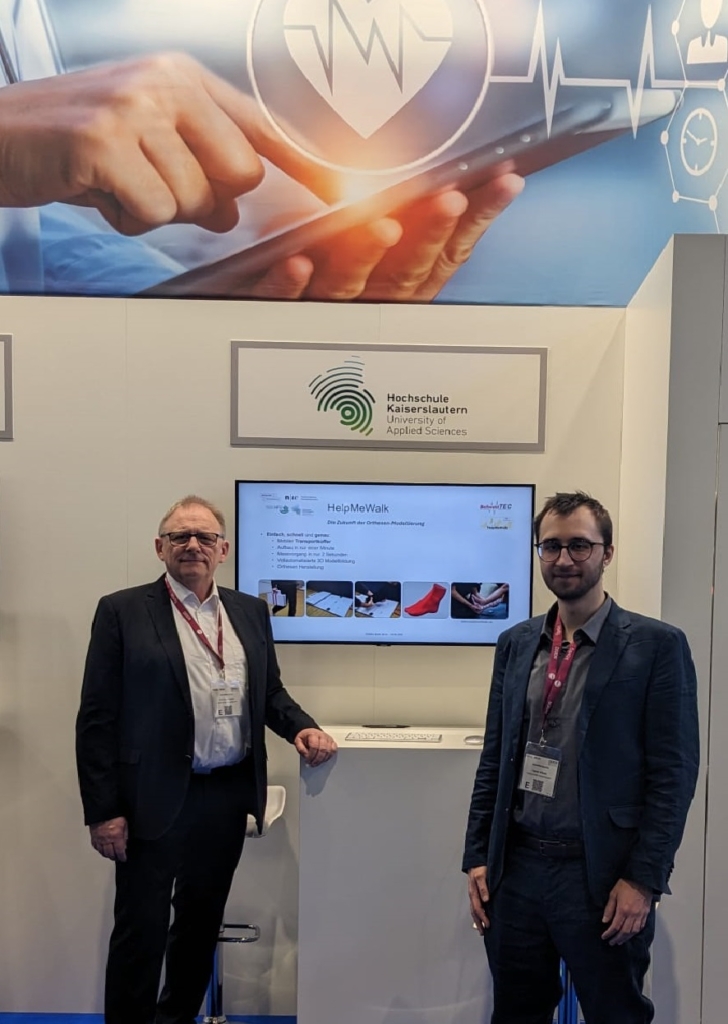At DMEA 2025 in Berlin, Europe’s leading trade fair for digital health, the University of Applied Sciences Kaiserslautern is showcasing its contribution to the research project HelpMeWalk. The Department of Computer Science and Microsystems Technology, led by Professor Dr. Uwe Tronnier, presented a novel reconstruction method that aims to replace traditional plaster casting with a fast, precise, and fully digital imaging process.
Background: Why HelpMeWalk Matters
In orthopedic clinics and workshops, the production of custom orthoses – such as ankle braces or corsets – is still initiated using a plaster cast, an outdated and imprecise method. During this process, orthopedic technicians must manually position the body part into the desired correction, which makes it impossible for optical scanners to capture the target geometry due to hand occlusion.
The result: a time-consuming and error-prone workflow, often requiring multiple fittings before a comfortable and functional orthosis is achieved. In an age of digital design and 3D printing, there’s a strong demand for a fully digital alternative to this analog process.
The Solution: Smart Sensing Meets Digital Reconstruction
HelpMeWalk aims to develop a smart bandage equipped with hundreds of embedded sensors. This wearable device captures a dense 3D point cloud of the anatomical shape during manual correction using physical principles like magnetic field sensing.
The main challenge is transforming this point cloud into a detailed and usable digital 3D model – a task being addressed by the University of Applied Sciences Kaiserslautern using cutting-edge methods in computer vision, signal processing, and shape reconstruction.

Kaiserslautern’s Contribution
The research team, under the direction of Prof. Dr. Uwe Tronnier, is developing an advanced software framework capable of processing the sensor data and reconstructing high-resolution anatomical shapes. These digital forms serve as input for the CAD-based orthosis design and are suitable for direct use in additive manufacturing.
The end-to-end process – from shape capture to 3D printing – can be completed without any analog steps, increasing both efficiency and precision.
DMEA 2025: Live at the VDE Pavilion
The university present its innovations at the VDE (Association for Electrical, Electronic & Information Technologies) joint booth during DMEA 2025 in Berlin. Professor Tronnier and his team will showcase the reconstruction software.
Visitors will have the opportunity to engage with the researchers. The booth is especially relevant for stakeholders in medical technology, orthopedic practice, rehabilitation, and digital healthcare.
A Win for Patients and Healthcare Providers
The goal is simple: faster, more precise, and fully digital orthosis fabrication. The system will reduce the number of adjustment cycles needed, improve wearing comfort, and increase the effectiveness of treatment. For patients, this means better mobility. For practitioners and insurers, it means cost and time savings.
HelpMeWalk is set to make the traditional plaster cast a thing of the past – digitally transforming orthopedic care for the better.
